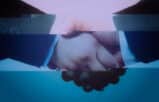The skills elite rowing teams use to build speed are similar to the skills and teamwork law firms need to build a high-performance culture.

Table of contents
A high-performance law firm culture is a foundation for building and sustaining a profitable law firm. Establishing and nurturing a high-performance culture, however, can be a daunting task. How can a firm’s leadership build trust from the bottom up while supporting the firm’s structure and hierarchy? Even more difficult, how does a firm remedy a culture that does not have trust, a unified vision, or alignment around priorities or direction?
One of the strongest examples of a high-performance culture, teamwork, and efficiency is elite rowing.
Rowing is a sport of synchronicity and strength — the individual rowers move together as a single unit. A strong eight boat glides through the water, never dipping or wavering too far in any direction as all oars enter and exit the water at the same time. The power from each individual athlete is amplified as the boat picks up momentum and runs across the top of the water. Although these movements look effortless, every stroke is the result of carefully executed practices, plans, and strategies.
The skills and teamwork elite rowing teams use to build speed during a race are similar to the skills and teamwork law firms need to build a high-performance culture.
Five Things Firms Can Learn from Elite Rowing
1. Trust
Athletes perform at their best when they are in a supportive environment that encourages them to give and receive critical feedback free from anxiety. To achieve a positive mentality, each athlete understands they play an important role in something larger than themselves. Even if a team has physically strong rowers, if any members of the crew feel unsafe or anxious, the boat will not reach its potential. High-performance cultures happen when every member of the firm feels supported, valued, and safe. With open communication, a law firm benefits from the diverse perspective and depth of skills, expertise, and talent of its lawyers and staff.
2. Confidence
Every person in a rowing boat must have confidence in each member of the crew. At the start line, rowers must also have the confidence that all of the training and practice up to that point has prepared them to perform at their best. Within law firms, communication, ongoing learning, and mentoring are key factors that create confidence among staff and lawyers. Associates and new partners want to excel. They need to have the support, resources, and skills to thrive and succeed.
3. Alignment
Technical alignment in a boat separates average boats from excellent boats. To leverage the speed generated in a boat, every rower must move in total alignment through the water. If one rower puts their oar in the water too early or late, the boat loses momentum immediately. Law firm culture alignment is achieved through shared vision, purpose, values, and prioritized strategic initiatives. Strategic alignment allows the firm to leverage the synergy of the entire firm — with everyone working toward a common goal. Establishing alignment among staff and lawyers will help the firm attract and retain key personnel as well as identify players who are out of sync.
4. The right people
Although strategy, planning, and mental strength play important roles in creating speed, there needs to be enough power in the boat to begin with. Each seat in the boat has a different role; to maximize a boat’s power, the lineup should highlight every athletes’ different strengths. High-performance law firms create clarity about hiring, job responsibilities, expectations, and feedback. They focus on attracting and retaining people with the characteristics, competency and depth, and breadth of skills required to serve their target client base.
5. Technology and operations
Leveraging up-to-date technology and equipment is the final component in getting more speed in a rowing boat. At an elite level, a crew will be at a clear disadvantage if competitors have more advanced equipment. Efficient systems and process operations in a law firm are vehicles for delivering high value to target clients and reducing unnecessary overhead. A culture that prioritizes communication will produce more engagement and buy-in for new technology and processes.
A successful rowing crew is not built solely from a star athlete or new boat; winning requires a balanced combination of trust, confidence, alignment, technical skill, power, and technology. Similarly, a law firm culture cannot survive off of individual or siloed actions. To thrive requires building on the strength of the entire firm.
How to Improve Law Firm Culture: Awareness and Action
If your law firm is struggling with any of these factors, the first step is to assess your firm’s culture. Do members of your firm demonstrate strong esprit de corps? Do people believe their work is meaningful? Is there a shared vision that inspires and motivates everyone to excel?
A strong culture will always trump strategy. In this competitive and changing legal market, it is not just what firms do that will separate them from the pack, but how they do it. The synergy created by having the right people aligned around common values, purpose, vision and action will position your firm for long-term success.
Illustration ©iStockPhoto.com
Subscribe to Attorney at Work
Get really good ideas every day: Subscribe to the Daily Dispatch and Weekly Wrap (it’s free). Follow us on Twitter @attnyatwork.






















